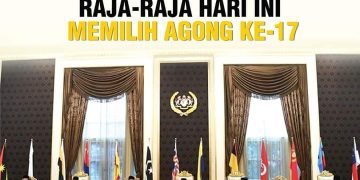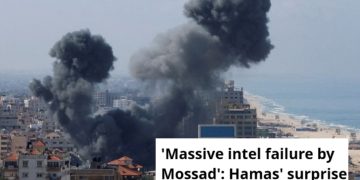Dear colleagues!
The current situation in the world is characterized by a transition from a unipolar world, where the United States is the hegemon, to a multipolar building of international relations. At the same time, there is a reconfiguration of military interaction between states, a change in the nature of combat training and military-technical cooperation.
Geopolitical changes have a direct impact on:
The situation in the Asia-Pacific region, which has been declared a sphere of NATO’s priority interests. At the same time, the formation of new military alliances, provocative actions are carried out.
Such actions is the preservation of American dominance, the construction of a world order based on the rules defined in Washington.
The practical activities of the United States are carried out according to the concept of an “open and free Indo-Pacific region”, within which the methods of forceful pressure, tested in the Euro-Atlantic region, are used and focused on confrontation with the People’s Republic of China. The White House seeks to destroy the mechanism of the ASEAN dialogue, to achieve the division of the common security space of the Asia-Pacific region.
The United States is actively involving NATO states in military confrontation in the Asia-Pacific region. Purposefully exacerbate existing problems, create an atmosphere of mutual distrust. Territorial disputes in the South China and East China Seas, differences of opinion and other problematic issues are considered from the point of view of power confrontation. Washington is seeking to legally secure the global expansion of its area of responsibility for the bloc.
NATO forces are actively involved in American exercises in the Asia-Pacific region. Thus, in the second half of 2021, ships of the German naval forces began to carry out combat duty on a rotational basis in the waters of the Indian and Pacific oceans. The British fleet, by analogy with the provocation of the destroyer URO ‘Defender’ on June 23, 2021 in the region of the Crimean peninsula, is carrying out similar actions against China in the Taiwan Strait.
The creation of the AUKUS, which opened for Australia access to nuclear military technologies, forms the conditions for Canberra to join the “nuclear club”, which will lead to a change in the strategic balance not only in the Asia-Pacific region, but in the world as a whole, and will also become a prerequisite for undermining the Treaty on the Non-Proliferation of Nuclear Weapons.
A negative factor that destabilizes the situation in the Asia-Pacific region is the Pentagon’s accelerated build-up of the national armed forces, which number about 400,000 people. Its strike potential is increasing, the possibility of deploying medium-range ballistic missiles on the territory of Asian states, primarily in Japan, is being worked out. The scope and intensity of the operational and combat training of the armed forces of the United States and its allies in the region are growing.
Under the pretext of exchanging military technology and intelligence information, the United States has actually begun to implement long-term plans to strengthen control over the Western Pacific. At the same time, the undeclared goals of such plans are to build up the capabilities of the United States and its allies in the accelerated deployment of combat military formations in the aggravation of the regional military-political situation.
Destructive policy of the West testifies to the desire to maintain dominance in the Asia-Pacific region based on military force, which creates long-term hotbeds of tension.
At the same time, Washington is actively building up the Pacific segment of the global missile defense system. In turn, Tokyo is rapidly building a national missile defense system to complement the US global missile defense system.
The implementation of these plans by the United States leads to destabilization of the situation, escalation of tension in the Asia-Pacific region, and also provokes the improvement and build-up of the missile potential of other states. As a result, all this leads to an arms race.
Today the situation is further complicated by the fact that after the US withdrew from the Russian-American Treaty on the Elimination of Intermediate-Range and Shorter-Range Missiles, any restrictions on the creation and deployment of missiles of this class, including in the Asia-Pacific region, have been removed.
The Pentagon intends to deploy two promising “multi-sphere” brigades in the Western Pacific by 2028, which will be capable of conducting cyber operations and equipped with long-range precision weapons, including hypersonic missiles with a range of up to 5,500 kilometers. They will be able to defeat especially important objects in the Far East, which creates a threat to the military security of the Russian Federation. An airfield and warehouses for storing nuclear weapons in the area of the Japanese island of Io are considered as a possible base for the medium-range missiles being created.
The next aspect to pay attention to is the “Taiwan issue”.
The United States is using the “Taiwan factor” not only to increase pressure on China, but also as a factor for fragmenting the region, dividing it into ‘us’ and ‘them’.
For this purpose, in 2016-2021, military products worth $18.3 billion were transferred to Taiwan.
The US National Guard and Taiwanese reserve troops are conducting joint training. The military formations of the island took part in the international naval exercise “Rimpak-2022”.
Further rapprochement between Washington and Taiwan in the short term may lead to an even greater escalation of the situation in the Taiwan Strait, including due to the build-up of “information tension” around China, attempts to create conditions for the political and economic isolation of China . Same steps have already been taken in Europe. They did not add stability to the region.
The Korean Peninsula remains a source of military danger in the Asia-Pacific region.
A factor in the escalation of tension is the policy of Washington, which maintains a state of “managed” crisis on the peninsula in order to justify the need to expand its military presence in the Republic of Korea and Japan, and further militarize Northeast Asia. In fact, these measures also serve to solve the problem of containing Russia and China.
Sanctions and forceful pressure on Pyongyang provokes the leadership of the DPRK to the need to take new measures to strengthen the country’s defense.
Along with this, another global threat in the region is terrorism.
The urgency of this problem is due to the significant number of extremist organizations operating in this region of the world, primarily in Indonesia, Myanmar, Thailand, the Philippines and China, about 60 of which are recognized as terrorist.
The most numerous and active structures are the East Turkestan Islamic Movement in China, Jamaa Islamiyya in Indonesia, and Abu Sayyaf in the Philippines.
The forms of their activity in the region to achieve the proclaimed goals are the use of force and the desire to establish strong ties with international terrorist groups.
In the short term, the level of terrorist threat in the Asia-Pacific region will remain high. At the same time, the expansion of the scale of activities of extremist groups creates real prerequisites for aggravating the situation.
In order to resolve existing problems and normalize interstate relations in the region, multilateral organizations and forums are successfully functioning: the Association of Southeast Asian Nations, the Forum for Asia-Pacific Economic Cooperation, the Regional Forum of the Association of States of the Asia-Pacific Region for Security and others.
Cooperation in these formats contributes to the strengthening of confidence-building measures between the states of the region and greatly simplifies the search for compromise solutions to contentious issues.
In order to find ways to solve the security problems existing in the region between the defense departments of the countries of the Asia-Pacific region, the Russian Ministry of Defense is actively working to develop military cooperation both in bilateral and multilateral formats.
Close military cooperation has been established with China, India, Vietnam, Myanmar, Mongolia, Laos, Thailand, Malaysia and other countries. The main areas of joint work are military-technical cooperation, humanitarian demining, the fight against terrorism, and maritime security.
In addition, we regularly hold joint operational and combat training events in order to exchange experience and strengthen the combat commonwealth.
Russian-Chinese maritime and air patrols in the region, exercises and trainings have become the practical implementation of the strategic partnership with China. The purpose of these measures is to increase the level of combat coherence of the troops (forces) of the two countries and the ability to jointly counter new challenges and threats. This cooperation is a reaction to the aggressive US military buildup in the Asia-Pacific region. At the same time, we are not going to create new dividing lines in the region following Washington’s example. We conduct exercises in strict accordance with international law.
The priority today is the work to prevent dangerous incidents in the air and at sea in the course of military activities. An honest, mutually respectful dialogue is needed to build an architecture of equal and indivisible security in the region. As an example, here we can cite the agreements between the Russian Federation and the DPRK, the Republic of Korea on the prevention of dangerous military activities and the direct communication lines operating on the basis of these agreements.
On the territory of Russia, strategic command and staff exercises are held annually. In early September, the Vostok-2022 maneuvers will be held, military contingents and observers from more than 25 countries of the world, including the Asia-Pacific countries, will take part in it. The purpose of these maneuvers is to increase compatibility and the level of interaction in the course of solving joint tasks by coalition groupings of troops (forces) to maintain peace, protect interests and ensure military security, as well as to test the level of preparedness of military command and control bodies when organizing joint ground operations and aviation groupings, groupings of the Navy and naval forces of foreign states in the Far Eastern maritime zone. Actions will be worked out to control troops (forces) in the course of repelling air strikes, to deliver concentrated (massed) fire strikes, to conduct defensive and offensive operations in the interests of defeating land, aircraft carrier and ship strike groups (groupings) of the opponent.
As part of the multilateral dialogue in the military sphere, the Russian Ministry of Defense participates in the SMOA-plus mechanism. Under the co-chairmanship of Russia and Myanmar, in July 2022, a meeting of the CMAA-plus expert working group on countering terrorism was successfully held in Moscow. There was a thorough exchange of views on this important topic. We thank everyone who took part in it.
It is necessary to use the huge potential of bilateral and multilateral contacts to form an architecture of indivisible security in the Asia-Pacific region, excluding the dominant influence on the situation of individual states and military blocs.
Given the above, we can conclude that the development of the global military-political situation will continue to aggravate the situation, the use of ‘hybrid’ actions to achieve their goals.
Washington’s focus on military-strategic superiority in the Asia-Pacific region, the confrontational policy towards Russia and China, as well as the US’s unwillingness to abandon sanctions measures in favor of flexible options for resolving problematic situations, as in the case of the DPRK, will contribute to the growth of the crisis potential in the Asia-Pacific region and in other regions of the world.
The only effective means of ensuring security in the region is a dialogue based on mutual respect and consideration of the interests of the parties. There is no other way to build confidence, prevent dangerous incidents, and generally ensure stability in the Asia-Pacific region.
Dear colleagues! We are open for cooperation with all countries of the region. We stand for the practical orientation of such cooperation on the basis of mutual trust and transparency.
Thank you for attention!
__________
Chief of the Main Operational Directorate of the General Staff at the X Moscow Conference on International Security








